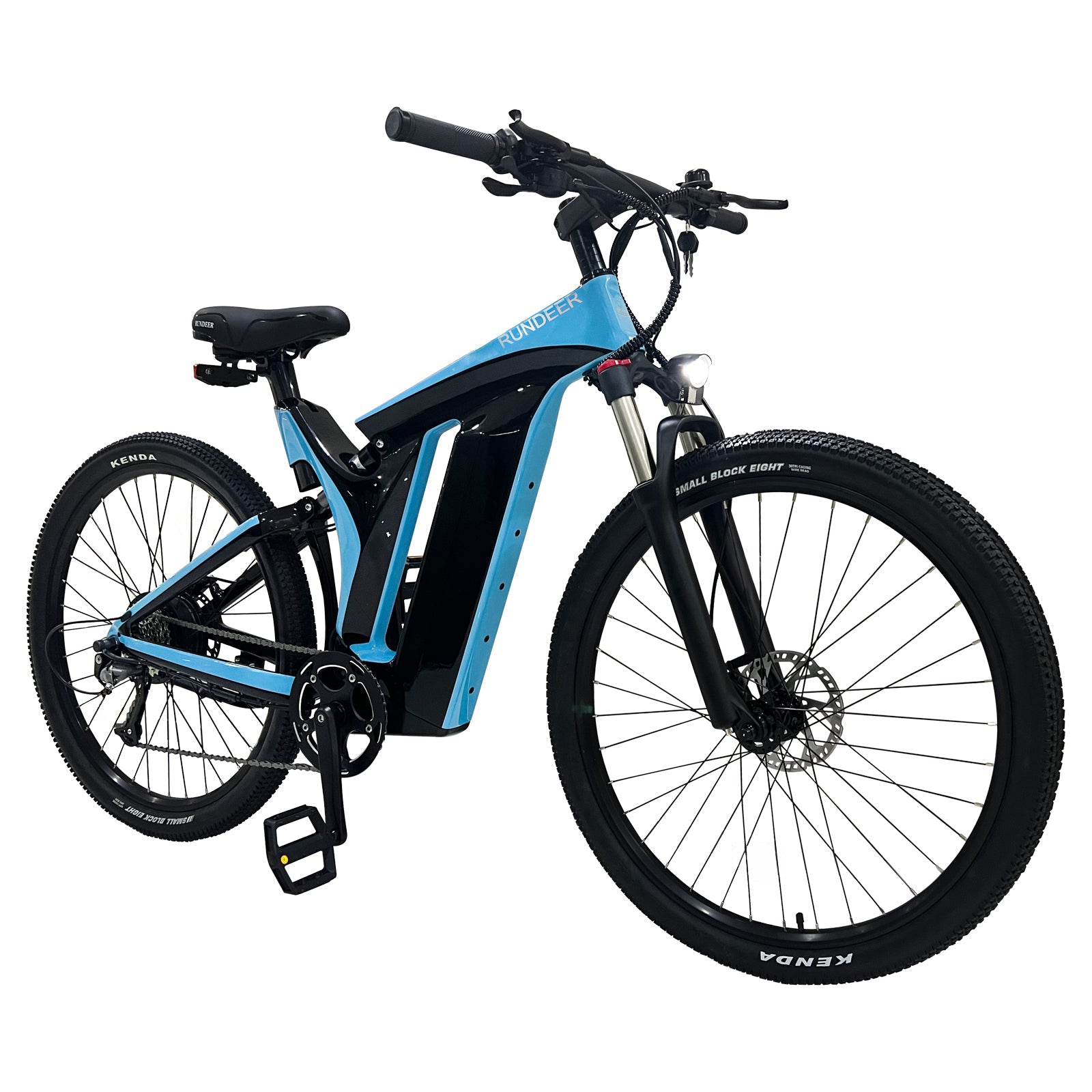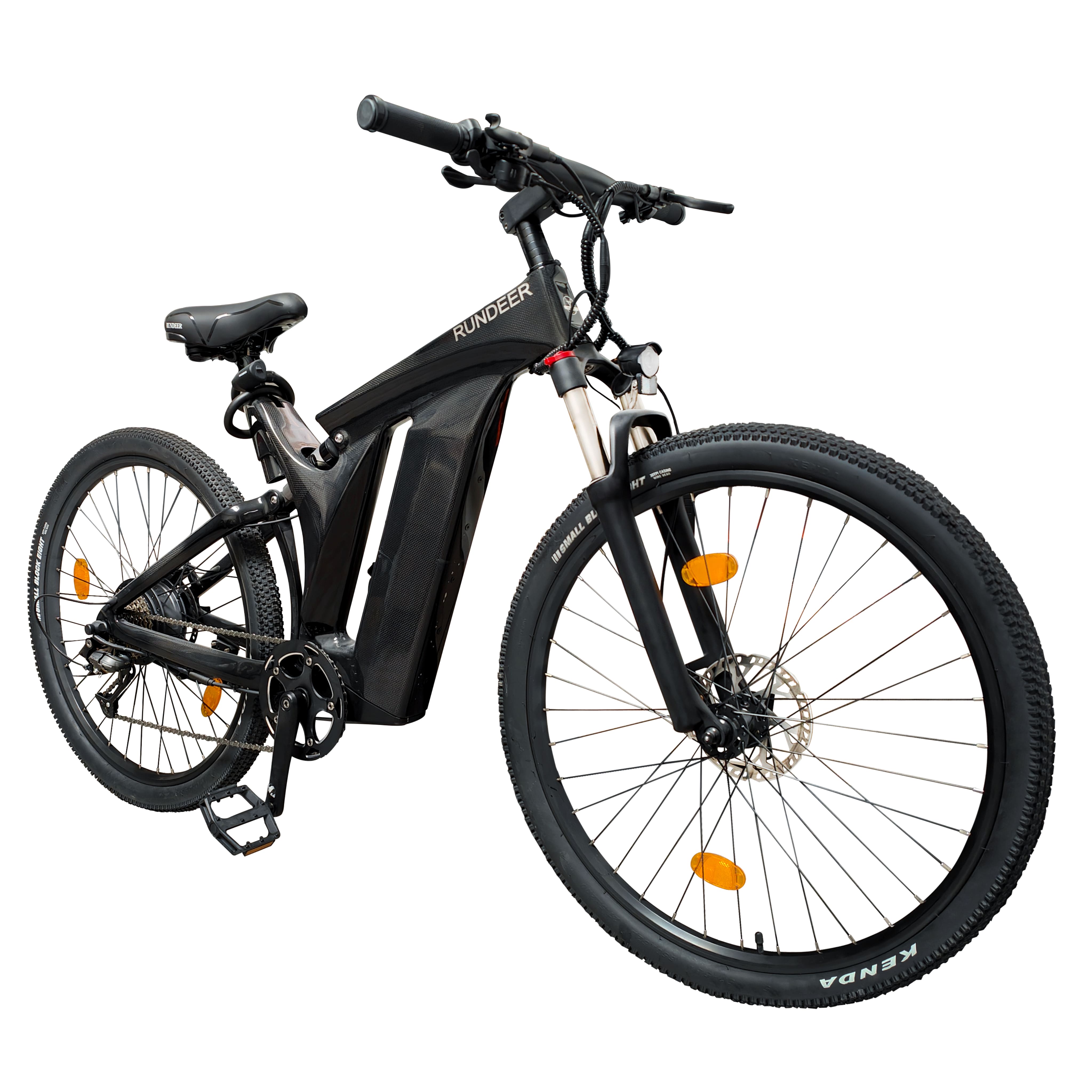In today’s world, where rising fuel prices and environmental concerns are pushing us to rethink our transportation options, e-bikes are quickly becoming a go-to solution for both commuters and adventure seekers. But just how affordable is riding an e-bike, particularly when it comes to charging costs? Let’s break down the numbers and reveal how much you can really save.
Understanding E-Bike Charging Costs
One of the most significant benefits of owning an electric bike is the minimal cost of keeping it charged and ready to go. The charging process is simple: plug it into a standard household outlet, and in a few hours, your e-bike is powered up for your next ride.
But how much does that really cost?
To give you a better idea, let’s consider a typical e-bike, such as the Rundeer Attack10, which is equipped with a 48V 20Ah battery.
- Battery Capacity: 48V × 20Ah = 960Wh (or 0.96 kWh)
- Average Cost of Electricity: In the U.S., the average electricity rate is around $0.16 per kWh.
So, the cost to fully charge your e-bike’s battery is:
0.96 kWh × $0.16/kWh = $0.15 per charge.
Yes, you read that right—just 15 cents for a full charge that could take you anywhere from 30 to 60 miles depending on riding conditions!
How Does This Compare to Driving a Car?
Now, let’s compare this to the cost of driving a traditional gas-powered vehicle. On average, a car consumes about 24 miles per gallon of gas. With gas prices fluctuating around $3.50 per gallon, driving those same 30 to 60 miles would cost:
- $3.50 per gallon ÷ 24 miles per gallon = $0.15 per mile.
- For a 30-mile trip: 30 miles × $0.15 = $4.50.
- For a 60-mile trip: 60 miles × $0.15 = $9.00.
Compared to the 12 cents for charging your e-bike, the savings are substantial!
Other Factors: Maintenance and Running Costs
Charging costs aren’t the only area where e-bikes save you money. E-bikes also require much less maintenance than cars or motorcycles. There’s no need to worry about oil changes, engine repairs, or fluctuating fuel prices. Regular maintenance usually involves checking the tires, brakes, and chain—simple tasks that keep your bike in peak condition without hefty bills.
Long-Term Savings
Over time, these small charging costs add up to significant savings. If you use your e-bike as your primary mode of transportation for daily commuting, you could save hundreds or even thousands of dollars per year on fuel, parking, and car maintenance. Plus, with more cities investing in bike infrastructure, e-bike commuting is becoming easier and safer.
The Environmental Impact
Beyond the financial benefits, e-bikes offer an eco-friendly way to get around. Since they produce zero emissions, they contribute to cleaner air and a healthier planet. Riding an e-bike is not only good for your wallet but also good for the environment.
Conclusion: E-Bikes Make Financial Sense
At the end of the day, the cost of charging an e-bike is just a small fraction of what it costs to fuel up a car or even a motorcycle. With minimal charging costs, low maintenance expenses, and no gas needed, e-bikes provide a smart and sustainable way to save money while enjoying the freedom of two wheels.
So if you’re looking to cut down on your commuting expenses, it might be time to join the e-bike revolution. Your wallet—and the planet—will thank you.













